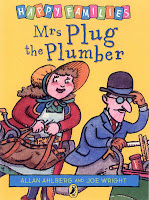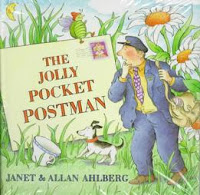As I said in my previous posts in this series on 'Improving Comprehension', we need to encourage ‘deep’ reading. For the reading of literature we want children not only to be able to read the words and follow a basic narrative plot, we want them to grasp the richness of characterization, the devices the author uses to create mood and tension, the intent and purpose of the writer and the language devices employed; all the while being moved by the text and able to reflect and respond critically to it. When reading non-fiction we want readers to be able to understand what it is that the author is seeking to communicate, to learn from the reading of the text, to use the text for varied appropriate purposes, and to be able to critique the accuracy and truth of its content.
The importance of prior knowledge
 In any act of reading prior knowledge is important. Research on Schema theory in the 1970s by Richard C. Anderson and his colleagues and students at the University of Illinois taught us a great deal about the way in which the interplay of prior knowledge stored in memory and new knowledge given prior to reading can help reading comprehension. The origins of Schema Theory can be traced to the work of Frederic Bartlett and his classic work 'Remembering: A Study in Experimental and Social Psychology' (1932).
In any act of reading prior knowledge is important. Research on Schema theory in the 1970s by Richard C. Anderson and his colleagues and students at the University of Illinois taught us a great deal about the way in which the interplay of prior knowledge stored in memory and new knowledge given prior to reading can help reading comprehension. The origins of Schema Theory can be traced to the work of Frederic Bartlett and his classic work 'Remembering: A Study in Experimental and Social Psychology' (1932).Schema Theory suggests that readers require prior knowledge to comprehend a text. This knowledge is organized within memory and needs to be accessed during reading. Information and knowledge is stored in schemata (the plural for schema), which readers access as they seek to relate what they know about a topic to the things that they are encountering and learning from a text. In essence, the brain creates frameworks to store knowledge and information that is related.
 In simple terms, if we were wishing to understand a short passage on cricket (the game) you would need to possess certain knowledge sets that help to make sense of it. To understand the sentence, 'He bowled a maiden over', the reader would need to have knowledge of the game sufficient to help them know that to 'bowl' is to take a small ball and propel it along a strip of grass in an over arm fashion to a batsman without them scoring a run from a number of balls. As well, the reader needs to know that an 'over' is the way we describe a set of 6 successive deliveries of the ball (being bowled). That a 'maiden' is the technical term for an over where no runs are scored and so on.
In simple terms, if we were wishing to understand a short passage on cricket (the game) you would need to possess certain knowledge sets that help to make sense of it. To understand the sentence, 'He bowled a maiden over', the reader would need to have knowledge of the game sufficient to help them know that to 'bowl' is to take a small ball and propel it along a strip of grass in an over arm fashion to a batsman without them scoring a run from a number of balls. As well, the reader needs to know that an 'over' is the way we describe a set of 6 successive deliveries of the ball (being bowled). That a 'maiden' is the technical term for an over where no runs are scored and so on.Schema theory suggests that such related knowledge is stored in a specific schema or more likely related schemata that relate to games, cricket, sport etc. Our brain has at least two main types of schemata for reading: content schema and textual schema, including knowledge of discourse structure and conventions. It also seems that schemata have a number of functions including: a) helping us to assimilate new knowledge; b) helping us to judge what is important; c) helping the reader to make inferences; d) enabling us to summarize information; and e) assisting our searches of memory for relevant background knowledge.
 Comprehension of texts not only requires the reader to be able to read words, understand word meanings, and possess complex understanding of how language and texts work, it also requires them to possess knowledge of the world and successfully use it by activating relevant schemata. It is probably self-evident that if the reader possesses sufficient background knowledge and can access it efficiently, then comprehension will be aided.
Comprehension of texts not only requires the reader to be able to read words, understand word meanings, and possess complex understanding of how language and texts work, it also requires them to possess knowledge of the world and successfully use it by activating relevant schemata. It is probably self-evident that if the reader possesses sufficient background knowledge and can access it efficiently, then comprehension will be aided.Researchers like Bransford (1979) have spent considerable time exploring how schemata are used as part of the reading process and offering insights into how they can be activated by readers increasing their ability to comprehend texts.
The Advance Organizer
One of the most commonly used strategies for priming prior knowledge with readers is the advance organizer. An Advance Organizers is simply a device that helps the reader to access efficiently relevant knowledge (stored as schemata). The term was coined by Ausubel (1959) who believed that the most important determinant of learning is what the learner already knows or brings to the task.
A number of preliminary strategies have been developed to help students relate new information appearing in a text to existing knowledge. The design of many of these reflects Ausubel's strategy of creating a specific mindset prior to the reading task. Here are a few examples:
(i) The use of structured overviews The structured overview is one way to organize or rehearse information and knowledge to aid understanding. Used prior to reading a non-fiction text, the structured overview is a helpful way to aid comprehension. It may be used in many form including webs, concept maps, or outlines. The strategy can be used across the curriculum where reading and writing, learning and remembering are required [Example opposite courtesy of New Zealand Ministry of Education Online Learning Centre].
The structured overview is one way to organize or rehearse information and knowledge to aid understanding. Used prior to reading a non-fiction text, the structured overview is a helpful way to aid comprehension. It may be used in many form including webs, concept maps, or outlines. The strategy can be used across the curriculum where reading and writing, learning and remembering are required [Example opposite courtesy of New Zealand Ministry of Education Online Learning Centre].
(ii) Spoken and written words - One of the simplest ways to offer an advance organizer is by talking about the possible content of a book. When we get children to look at the cover, read and discuss the title, and discuss the content that the story might be about, we are using an advance organizer. (iii) Diagrams and charts - examples of this approach include Venn diagrams and 'KWL' charts. Venn diagrams are overlapping circles (as used in mathematics) that can be used in reading to provide a content overview before reading. KWL charts ask the reader to outline prior to reading what they know about the topic and what they want to know. After reading they then complete the chart by writing what they learned. The KWL chart was first used by Ogle (1986) and can be useful when starting a new book or any unit of learning. Once students have been taught to use diagrams and charts in a group, they can be encouraged to use them with other students or independently.
(iii) Diagrams and charts - examples of this approach include Venn diagrams and 'KWL' charts. Venn diagrams are overlapping circles (as used in mathematics) that can be used in reading to provide a content overview before reading. KWL charts ask the reader to outline prior to reading what they know about the topic and what they want to know. After reading they then complete the chart by writing what they learned. The KWL chart was first used by Ogle (1986) and can be useful when starting a new book or any unit of learning. Once students have been taught to use diagrams and charts in a group, they can be encouraged to use them with other students or independently.
 (iv) Discussion of related extra-textual material (e.g. photographs, music, video) - Another way to prime background knowledge and schemata is by using related material in addition to the text. This could include photographs that relate to the content, objects, music or even videos. The showing of a video version of a text prior to reading is one simple way to do this. This is particularly helpful if children are reading difficult texts that might normally be just beyond their developmental and language capabilities. If you are doing a unit of work on insects with grade 2, bring in a box of insects and allow them to observe them and talk about them prior to commencing reading and writing about insects.
(iv) Discussion of related extra-textual material (e.g. photographs, music, video) - Another way to prime background knowledge and schemata is by using related material in addition to the text. This could include photographs that relate to the content, objects, music or even videos. The showing of a video version of a text prior to reading is one simple way to do this. This is particularly helpful if children are reading difficult texts that might normally be just beyond their developmental and language capabilities. If you are doing a unit of work on insects with grade 2, bring in a box of insects and allow them to observe them and talk about them prior to commencing reading and writing about insects.
 (v) Using drawing prior to reading - I have already suggested in a previous post how powerful drawing or sketching can be prior to the reading task. The 'Sketch to Stretch' Strategy and 'Map Making' are two examples that can act as Advance Organizers (as well as doing other things).
(v) Using drawing prior to reading - I have already suggested in a previous post how powerful drawing or sketching can be prior to the reading task. The 'Sketch to Stretch' Strategy and 'Map Making' are two examples that can act as Advance Organizers (as well as doing other things).
Related Reading
Useful introductory article on Schema Theory from ERIC (here)
All previous posts on comprehension (here)




















